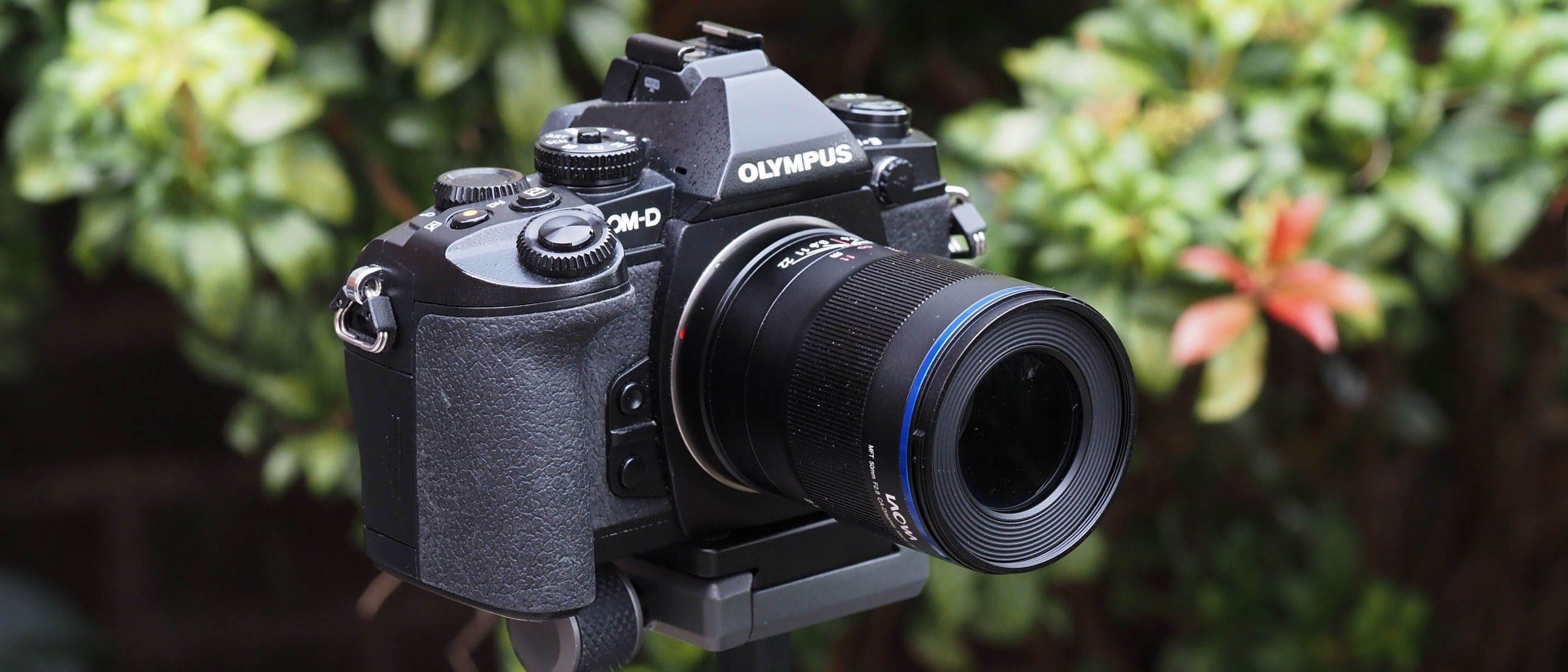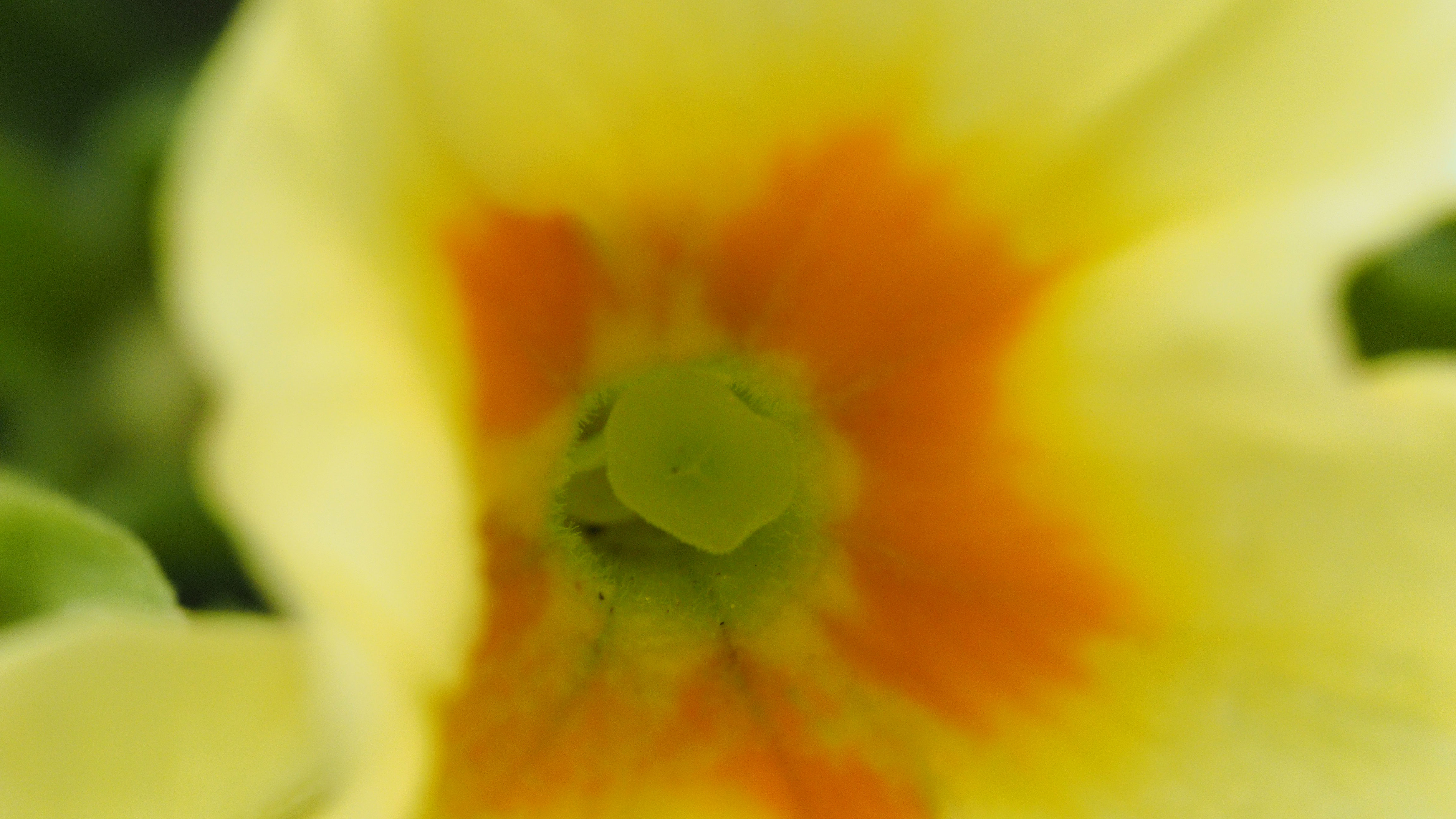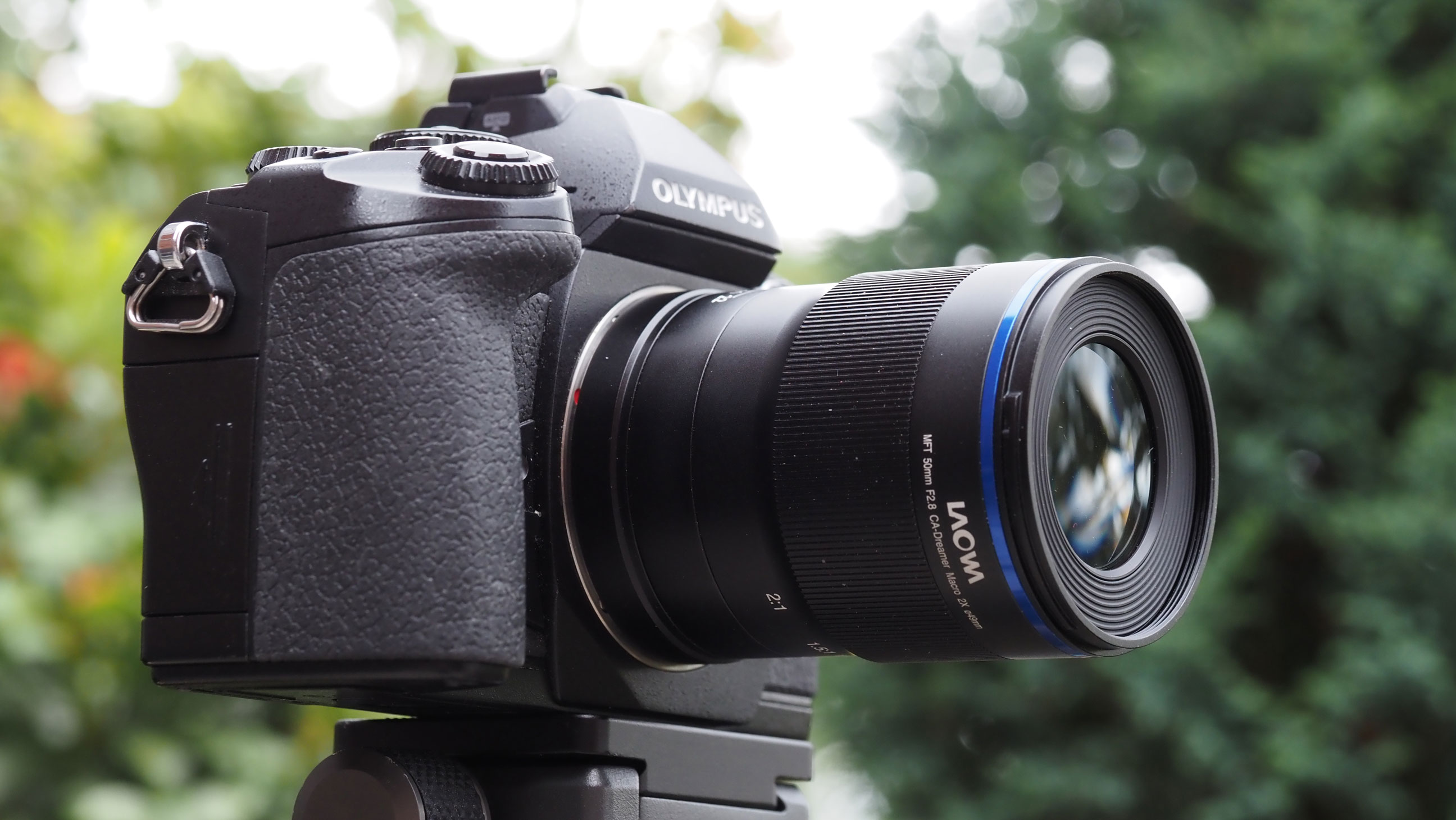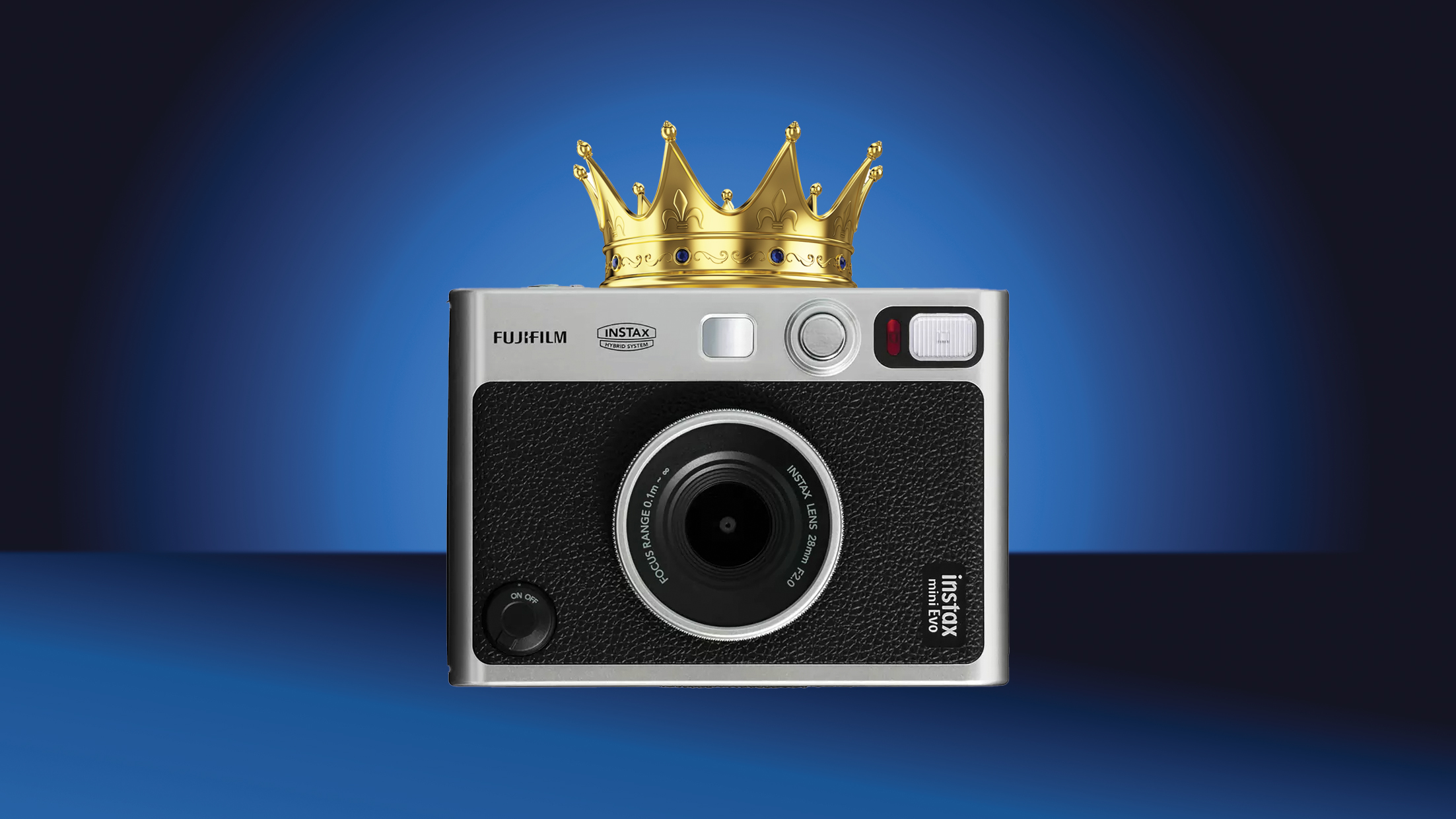Digital Camera World Verdict
This is a well-made, high-powered lens that can offer up to 2x the magnification of Olympus’s own very good M.Zuiko Digital ED 60mm f2.8 Macro lens. The Laowa lens is also a little cheaper, and the lack of autofocus is less of an issue in macro photography. All in all, it’s a very interesting alternative.
Pros
- +
2x ultra-macro magnification
- +
Microchip camera communication
- +
High quality feel
- +
Internal focusing
Cons
- -
Manual focus only
Why you can trust Digital Camera World
The Laowa 50mm f/2.8 2X Ultra Macro APO comes from one of Laowa’s two main product lines – ultra-wide-angle lenses and ultra-macro lenses. This one is designed specifically for Micro Four Thirds cameras from Olympus and Panasonic, and has a couple of extra tricks up its sleeve.
It competes directly with the Olympus M.Zuiko Digital ED 60mm f2.8 Macro lens, however, which is a very similar size, only a little more expensive, and features autofocus and manual focus, where the Laowa lens is manual focus only.
The Laowa has two things in its favour. One is that it offers a maximum of 2x magnification compared to the Olympus lens’s 1x, another is its top-quality build and materials, which make the Olympus lens feel distinctly plasticky when you place them side by side.
Specifications
Mount: Micro Four Thirds
Full frame: No
Autofocus: No
Image stabilization: No
Lens construction: 14 elements in 10 groups
Angle of view: 24.4 degrees
Diaphragm blades: 7
Minimum aperture: f/22
Minimum focusing distance: 0.135m
Maximum magnification ratio: 2x
Filter size: 49mm
Dimensions: 53.5x79mm
Weight: 240g
Key features
The most interesting thing about this lens is its embedded microchip and aperture control motor. Laowa lenses have traditionally been completely manual and ‘dumb’, with no electronic communication with the camera. This means – usually – that you must set the lens aperture on the lens itself, and viewing and exposure metering are in stop-down mode at the aperture selected.
The Laowa 50mm f/2.8 2X Ultra Macro APO is different. It has an in-built chip and motor for diaphragm control from the camera body. There is no aperture ring – instead, you set the lens aperture on the camera. All viewing is done at full aperture, and the lens is then stopped down to the taking aperture when you take the picture. This is how all modern lenses work, so it’s a big step forward for Laowa.
Not only that, the lens communicates EXIF (shooting) data to the camera body, so where previously Laowa lens users would get no aperture or other lens information in their image EXIF data, now they get both.
The best camera deals, reviews, product advice, and unmissable photography news, direct to your inbox!
Other than that, this lens has the kind of sophisticated optical design we’ve grown used to seeing from Laowa, incorporating no fewer than 14 elements in 10 groups. It’s an APO (apochromatic) design aimed at suppressing or eliminating chromatic aberration.
Build and handling
Laowa lenses typically cost less than comparable own-brand lenses, but these are not budget lenses. A glance at the optical configuration is the first clue, and the solid fee in the hand is the second. The Laowa 50mm f/2.8 2X Ultra Macro APO feels an extremely well made lens, with a satisfying weight and ‘heft’ and a super-smooth focus ring with a very long travel for pinpoint focusing.
The other advantage of the chip now build into the lens is that it can automatically activate your camera’s focus magnifier when you turn the focus ring. That’s a real time-save and, with macro photography, the magnification is essential in order to achieve sharp focus when depth of field is almost non-existent.
On the subject of depth of field, there are depth of field markers for f/5.6, f/11 and f/22, but with ultra-close-up photography, there is so little depth of field, at any aperture, that they might as well not be there.
In Micro Four Thirds terms, this is actually quite a ‘long’ lens, equivalent to a 100mm f/2.8 in full frame terms. It would also make a very effective little portrait or short telephoto lens for regular photography, though you will have to get used to manually focusing each shot.
The Laowa 50mm f/2.8 2X Ultra Macro APO is just 79mm long, with a weight of 240g and an internal focus system which means its length does not change. It’s small enough fit in the corner of your camera bag and would take up very little space.
Performance
The Laowa 50mm f/2.8 2X Ultra Macro APO performed exactly as described in our tests, with no visible chromatic aberration or distortion and showed itself capable of capturing very sharp fine details.

There were a couple of incidents of slight overexposure, as if the diaphragm control was slightly out, but there was no particular pattern to this and it only happened once or twice.
And while this lens does stop down to f/22, the image detail is badly softened by diffraction at this point, and you’d probably be better off sticking to f/11 or wider. In theory, f/22 will give you more depth of field, but when you’re working at the kind of magnifications this lens is capable of, it’s not going to help you. For ultra close up photography, you really need focus stacking techniques to get the whole of your subject sharp.
There is no image stabiliser in the lens, and while today’s MFT cameras have in-body stabilisation, it won’t be able to counter the fore-and-aft focus shift from even the slightest movement in handheld shooting. This is a lens that really needs to be used on a tripod.
Verdict
In macro photography the lack of autofocus is not the issue you might imagine, as most ultra-close-ups need to be focused manually anyway. Where the Laowa 50mm f/2.8 2X Ultra Macro APO really scores is in the quality of its construction and materials and its general feel and handling. The use of an electronic chip to communicate with the camera is a major convenience – though it’s a bit sad to see there’s no longer an aperture ring on the lens.
If you are serious about macro photography, this Laowa is a great proposition. It’s cheaper than its nearest Olympus equivalent and focuses 2x closer. Having said that, the autofocus on the Olympus lens does make it a little easier to use, and it’s a massive advantage for everyday photography at longer distances.
Read more:
• Best macro lenses
• Best Micro Four Thirds lenses
• Best Olympus cameras
• Best Panasonic cameras

Rod is an independent photography journalist and editor, and a long-standing Digital Camera World contributor, having previously worked as DCW's Group Reviews editor. Before that he has been technique editor on N-Photo, Head of Testing for the photography division and Camera Channel editor on TechRadar, as well as contributing to many other publications. He has been writing about photography technique, photo editing and digital cameras since they first appeared, and before that began his career writing about film photography. He has used and reviewed practically every interchangeable lens camera launched in the past 20 years, from entry-level DSLRs to medium format cameras, together with lenses, tripods, gimbals, light meters, camera bags and more. Rod has his own camera gear blog at fotovolo.com but also writes about photo-editing applications and techniques at lifeafterphotoshop.com







